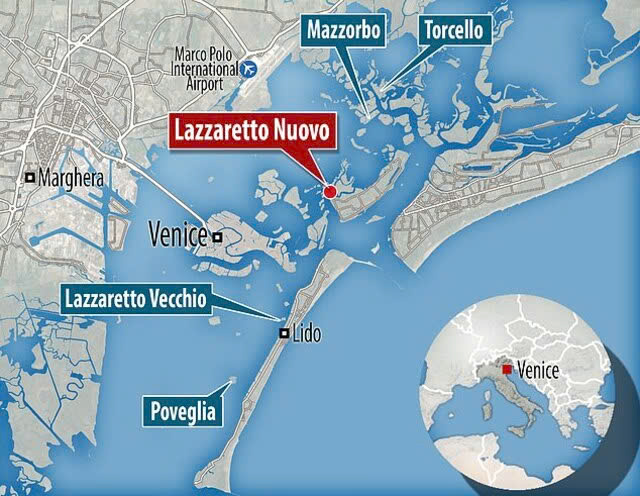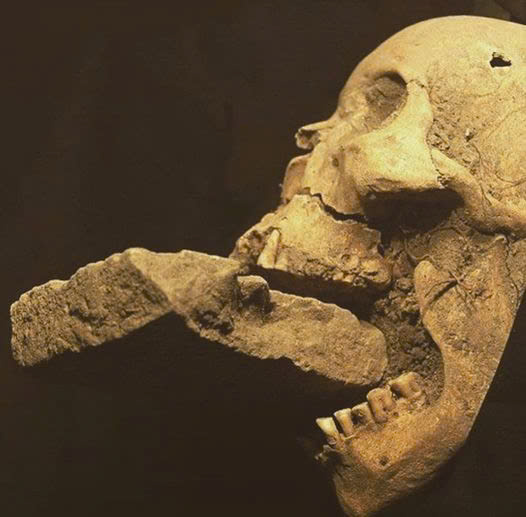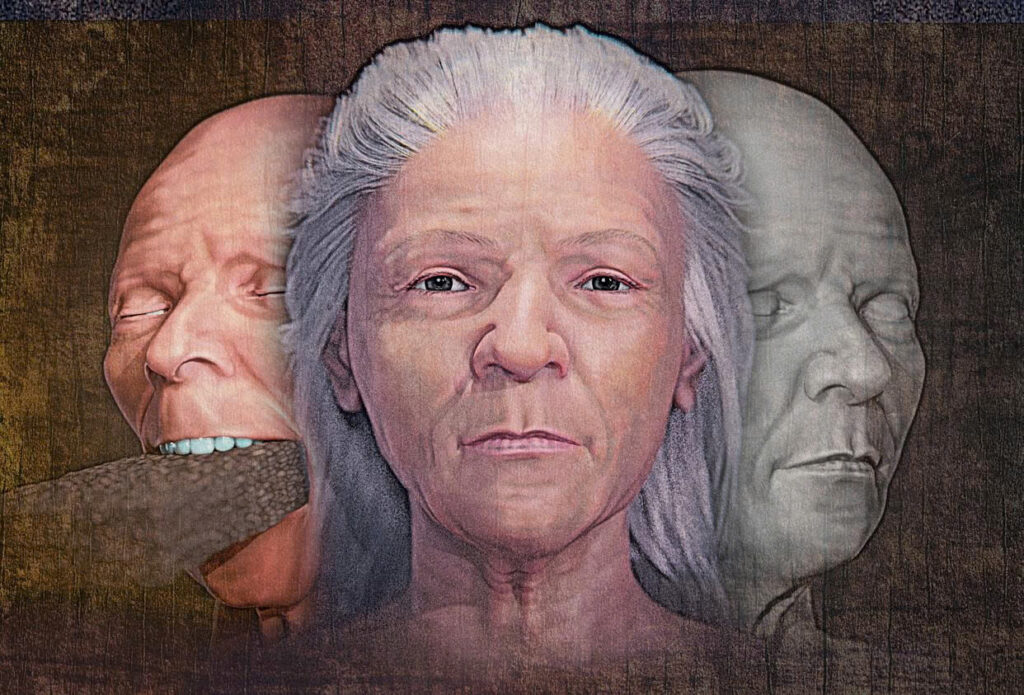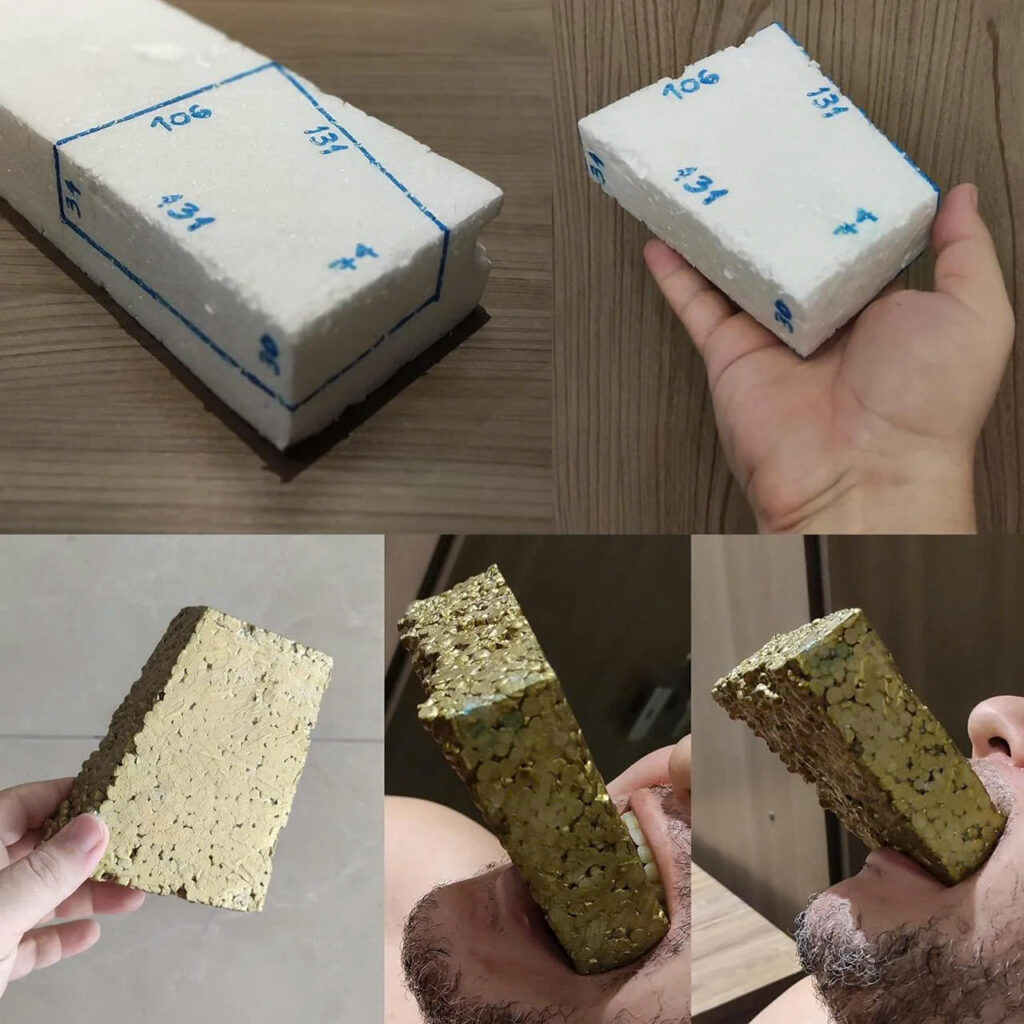
In the shadow of Venice’s grand canals lies a tale more chilling than fiction. On the small island of Lazzaretto Nuovo, archaeologists discovered the remains of a woman buried with a brick forced into her mouth—a grim testament to medieval fears and the mysterious rituals enacted to combat them. This remarkable find from a 16th-century plague grave offers us a window into a world where science and superstition collided during humanity’s darkest hours.
The Plague Island’s Grim Secret

Lazzaretto Nuovo served as a quarantine station during the devastating plague outbreaks that swept through Venice between the 15th and 17th centuries. In 2006, researchers excavating a mass grave on this isolated island made a startling discovery: among hundreds of plague victims lay the skeleton of an elderly woman estimated to be in her early 60s at death. What distinguished her remains was the deliberate placement of a brick between her jaws—a burial practice linked to vampire superstitions of the era.
The island, once a bustling checkpoint where ships suspected of carrying plague were detained, has preserved this macabre secret for centuries. The mass graves tell stories of not only disease and death but also of the psychological impact these epidemics had on survivors.
When Death Wasn’t Final: Plague and Vampire Mythology
Understanding Medieval Vampire Fears

During the 16th century, when plague ravaged Europe, scientific understanding of death and decomposition remained primitive. Bodies in mass graves often exhibited natural postmortem changes that seemed supernatural to medieval observers—bloated corpses, blood seeping from mouths, and shifting positions due to gas buildup frequently led to suspicions of vampirism.
“Those who died of plague were particularly feared,” explains forensic archaeologist Dr. Matteo Borrini, who led the excavation. “The living believed these unfortunate souls might return from the grave to spread disease among survivors.”
The Ritual of Prevention
The brick in the woman’s mouth represents a specific anti-vampire ritual practiced throughout medieval Europe. By inserting objects into the mouth of the deceased, gravediggers and mourners believed they could prevent the dead from feeding on the living or breathing plague miasma onto survivors.
“This wasn’t an isolated practice,” notes Dr. Elena Vassallo, medieval historian at Venice University. “Similar preventative measures against the ‘undead’ have been documented across Europe, especially during major plague outbreaks when fear and mortality rates peaked simultaneously.”
Science Meets Superstition: The Modern Investigation
Using advanced forensic techniques, Brazilian expert Cícero Moraes conducted detailed studies of the woman’s remains. Through 3D facial reconstruction, Moraes was able to give the anonymous woman a face—revealing a silver-haired individual with a slightly crooked nose and pointed chin, likely of lower-class European descent.

Moraes’s investigation went beyond appearance. He meticulously examined whether a brick could be placed in the mouth without damaging the oral cavity, even testing the theory on himself using a foam replica. His findings confirmed what archaeologists suspected: the brick placement was no accident but a deliberate ritual performed after death.
Who Was the “Vampire” Woman?

While her identity remains unknown, forensic analysis provides clues about her life. At approximately 60 years old when she died—an impressive age for the 16th century—she lived during a time when Venice was a powerful maritime republic but also regularly devastated by plague. Perhaps her age or some physical characteristic marked her as suspicious in the eyes of her community, leading to the special treatment of her corpse.
Video
Beyond Venice: Europe’s Vampire Burial Traditions

The Venetian discovery is just one example of unusual burial practices tied to vampire folklore. Similar findings have emerged throughout Europe—from skeletons with stakes driven through their hearts in Bulgaria to corpses buried face-down in England and individuals with stones placed in their mouths in Poland and Ireland.
These practices reflect a pan-European response to the existential dread that accompanied epidemic disease before the advent of modern medicine. Without scientific explanations for contagion, communities developed elaborate rituals to protect themselves from perceived supernatural threats.
Legacy of Fear: What the Vampire Burial Teaches Us
This remarkable archaeological discovery provides more than just a curiosity—it offers profound insights into how societies cope with disaster. The brick in the woman’s mouth serves as a physical manifestation of collective fear, a tangible reminder of how humans attempt to maintain control when faced with incomprehensible tragedy.

As we examine these practices with contemporary understanding, we gain perspective on our own responses to epidemics and death. The story of the Venetian “vampire” woman reminds us that throughout history, humans have sought explanations and protections against the unknown—even when those protections crossed into what we now recognize as superstition.
This silent witness from Lazzaretto Nuovo speaks across centuries, her unusual burial preserving not just her remains but also the fears, beliefs, and desperate hopes of a society under siege from an invisible enemy they could neither understand nor defeat.
In the end, the most chilling aspect of this discovery isn’t the possibility of vampires—it’s the reminder of how thin the veil between reason and fear can become when humanity faces its darkest hours.